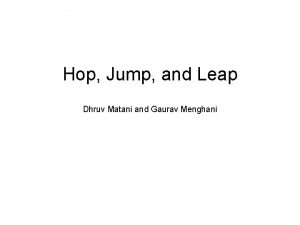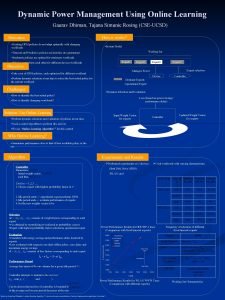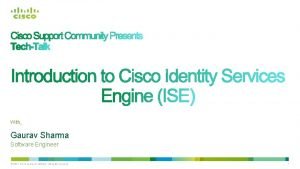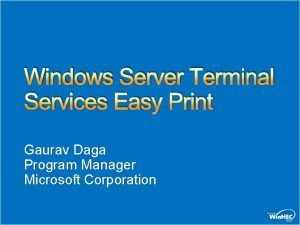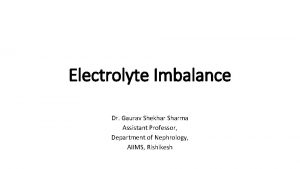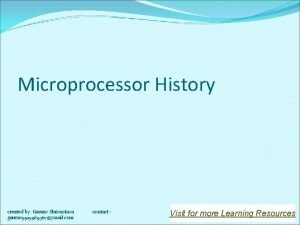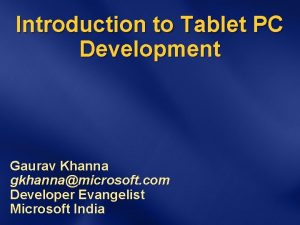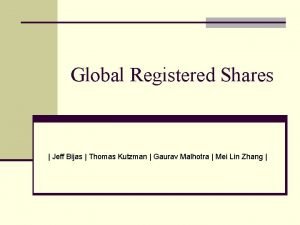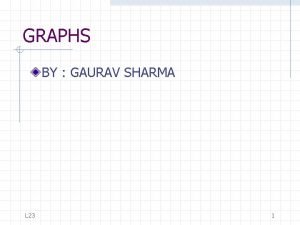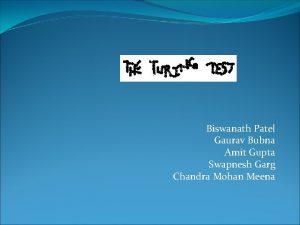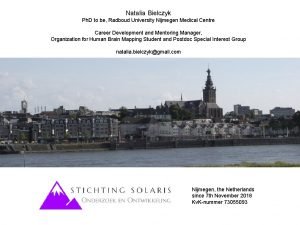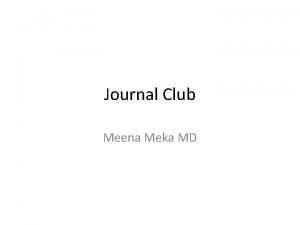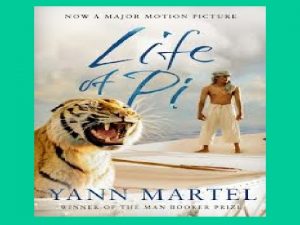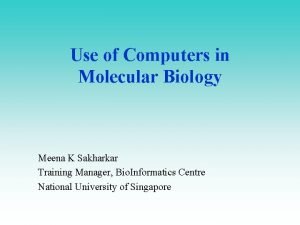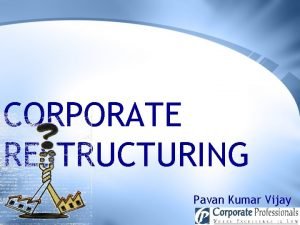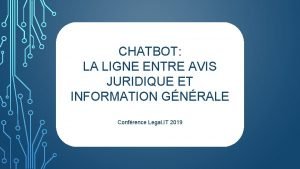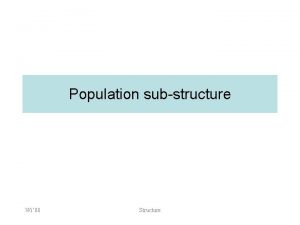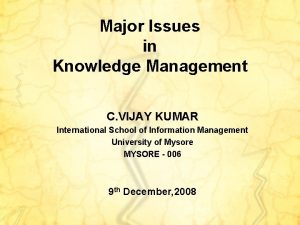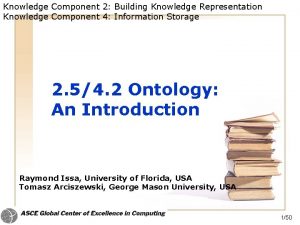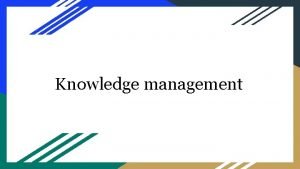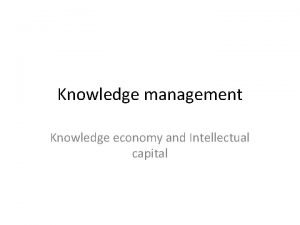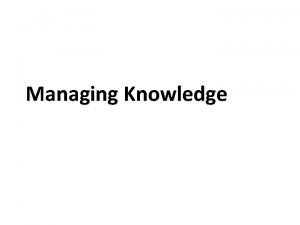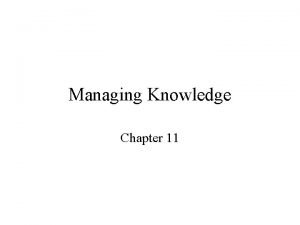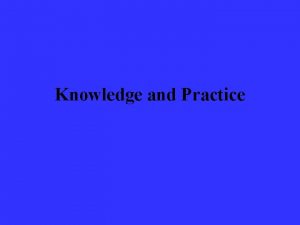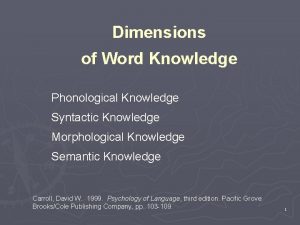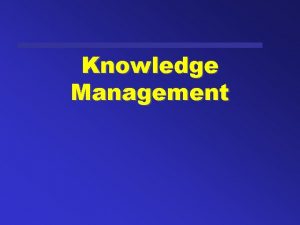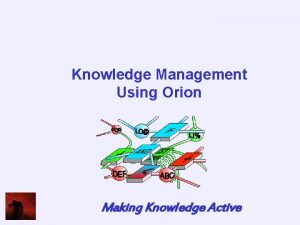Knowledge Structure Vijay Meena 99005027 Gaurav Meena 00005020



















- Slides: 19

Knowledge Structure Vijay Meena (99005027) Gaurav Meena (00005020)

Introduction l Human being involve a lot of common sense - A child is always youngr than his mother - You can push something with a straight stick But computer fails to recognize them We can write programs that exceeds the capability of experts, but yet we cant write program that match the level of a three years old child at recognizing objects.

Common sense knowledge l l Computer lacks common sense Why has it been so hard to give computer this common sense ? - involves a great amount of knowledge - Many kind of representation. AI has become the gold mine of techniques We don’t want to give computers knowledge about particular areas, but instead want to give common sense.

Common sense is problem of great scale and diversity Two parts 1. How to give millions of piece of knowledge to computer? - need a database. 2. How to give computers the capacity for common sense reasoning? - having database is not enough - don’t have enough idea about how to represent, organize and use common sense knowledge

Some projects l Cy. C – Started by Douglous lelant in 1994 l Word. Net – Started by Fellbaum in 1998 l Concept. Net - Started by MIT Media Lab. Team after World. Net

Cy. C - Cy. Corp l l l To create the world’s first true AI having both common sense and the ability to reason about it Cy. C represents it’s common knowledge in a language call Cy. CL is a second order logical language with second order features such as quantification over predicates.

Word. Net l l Word. Net is an online lexical reference system Have semantic network representation Nodes have lexical notation English nouns, verbs, adjectives and adverbs are organized into synonym sets, each representing one underlying lexical concept.

Concept Net l l Very large semantic network of common sense knowledge. Structured as a network of semi structured natural language fragment. Captures a wide range of common sense concept and relations. Ease of use camparable to Word. Net.

Concept. Net l l l Presently consists of 250, 000 elements of common sense knowledge. Combined the best of both Cy. C and Word. Net. Extended Sementic network representation of Word. Net.

Word. Net v/s Concept. Net l l Word. Net lexical notation of node Small ontology of semantic relations l l Concept. Net Conceptual notation of node Richer set of relation appropiate to concept level node At present there are 19 semantic relations used in Concept. Net representing different categories.

Representation of Knowledge l l Logic representation : unambigious Natutal language representation : ambigious Maintaining some ambiguity lends us greater flexibility. Methodology for reasoning over natural language fragment

Concept Net Focus on the Knowledge representation aspects of Concept. Net

Origin l l l machine-usable resource mined OMCS CRIS mined predicate argument structures from OMCS Is produced by an automatic process which applies a set of ‘common sense extraction rules’ to the semi-structured English sentences of the OMCS corpus.

Structure Semi-Structured natural-language fragment nodes falls into three general classes : l Noun Phrases (things, places, people) l Attributes (modifiers) l Activity Phrases (actions and actions compounded with a noun phrase or prepositional phrase)

Grammer for partially structuring natural language cncepts Node class A portion of the grammar Examples of valid nodes Noun Phrases NOUN, ADJ NOUN, NOUN PREP NOUN “apple”; “San Francisco”; “fast car”; “life of party” Attributes ADJ, ADV ADJ “red”; “very red” Activity Phrases VERB, VERB NOUN, ADV VERB, VERB PREP NOUN, VERB NOUN, PREP NOUN “eat”; “eat cookie”; “quickly eat”; “get into accident”; “eat food with fork”

Semantic Relation Types currently in Concept. Net l l l l Category Things Events Actions Saptial Goals Functions Generic

Methodology for Reasoning over Natural Language Concepts l l Computing conceptual similarity Flexible Inference: context finding, inference chaining, conceptual analogy.

Conclusion l l l To support several kinds of practical inferences over text To maintain an easy-to-use knowledge representation Concept. Net follows the easy-to-use semantic network structure of Word. Net, but incorporates a greater diversity of relations and concepts inspired by Cyc.

References l l www. openmind. org www. conceptnet. org http: //www. cogsci. princeton. edu/~wn/ Focusing on Concept. Net's natural language knowledge representation, Liu, H. & Singh, P. (2004)
 Gaurav menghani
Gaurav menghani Gaurav bubna
Gaurav bubna Gaurav sharma cisco
Gaurav sharma cisco Gaurav daga microsoft
Gaurav daga microsoft Gaurav shekhar
Gaurav shekhar 8bit gaurav
8bit gaurav How to copy text from image in pc
How to copy text from image in pc Gaurav bubna
Gaurav bubna Adjacency matrix multigraph
Adjacency matrix multigraph Gaurav bubna
Gaurav bubna Meena makary
Meena makary Meena meka balanna lyrics
Meena meka balanna lyrics Life of pi real story
Life of pi real story Meena computers
Meena computers Dr manpreet bains
Dr manpreet bains Describe the beggar of a gift of chappals
Describe the beggar of a gift of chappals Unsplash motivation
Unsplash motivation Vijay nayar
Vijay nayar Pavan kumar vijay
Pavan kumar vijay Chatbot juridique
Chatbot juridique
